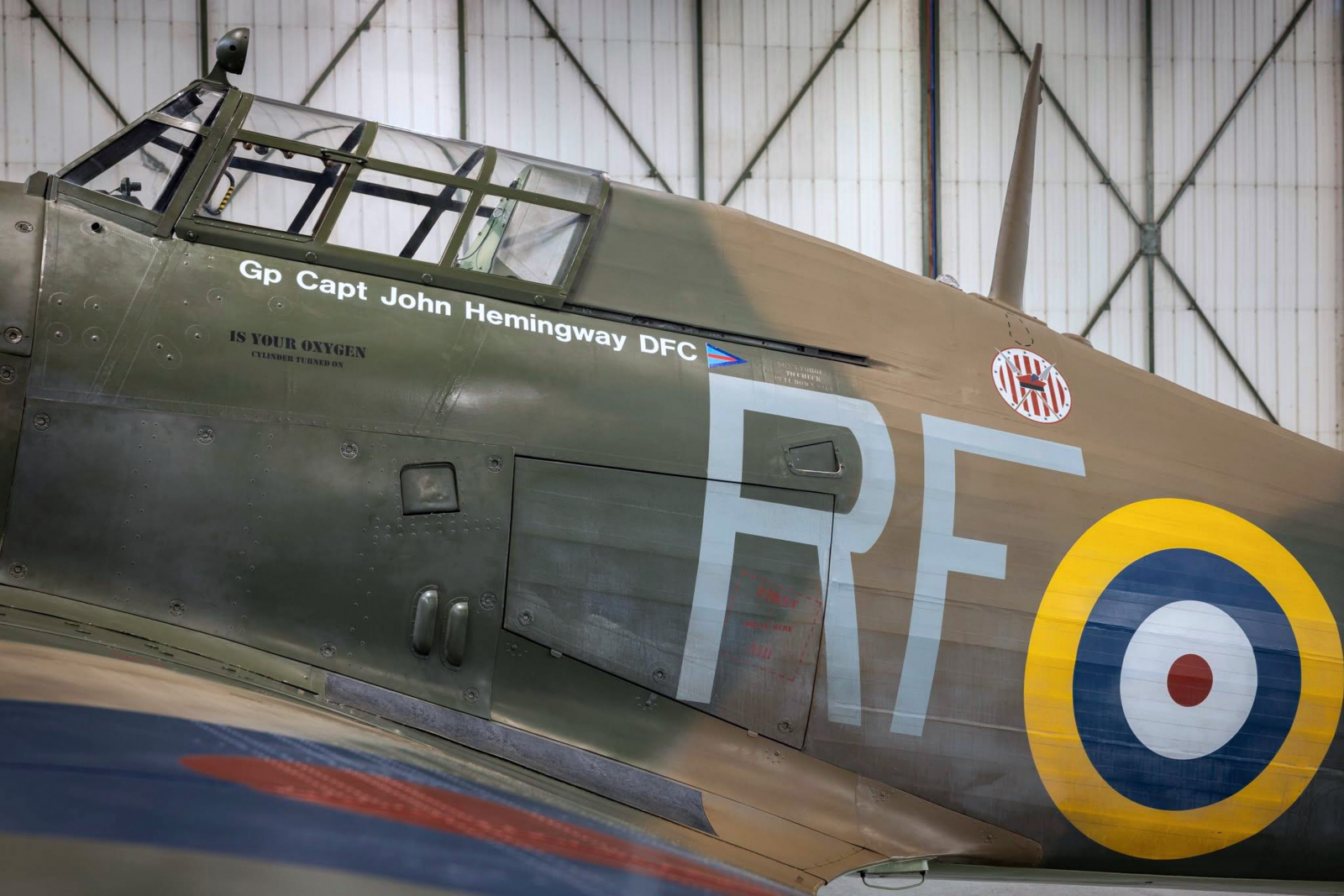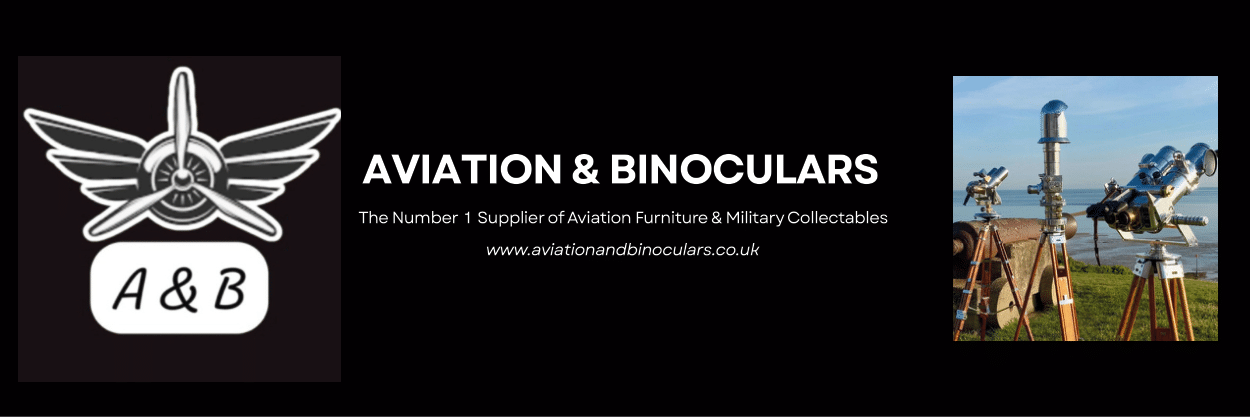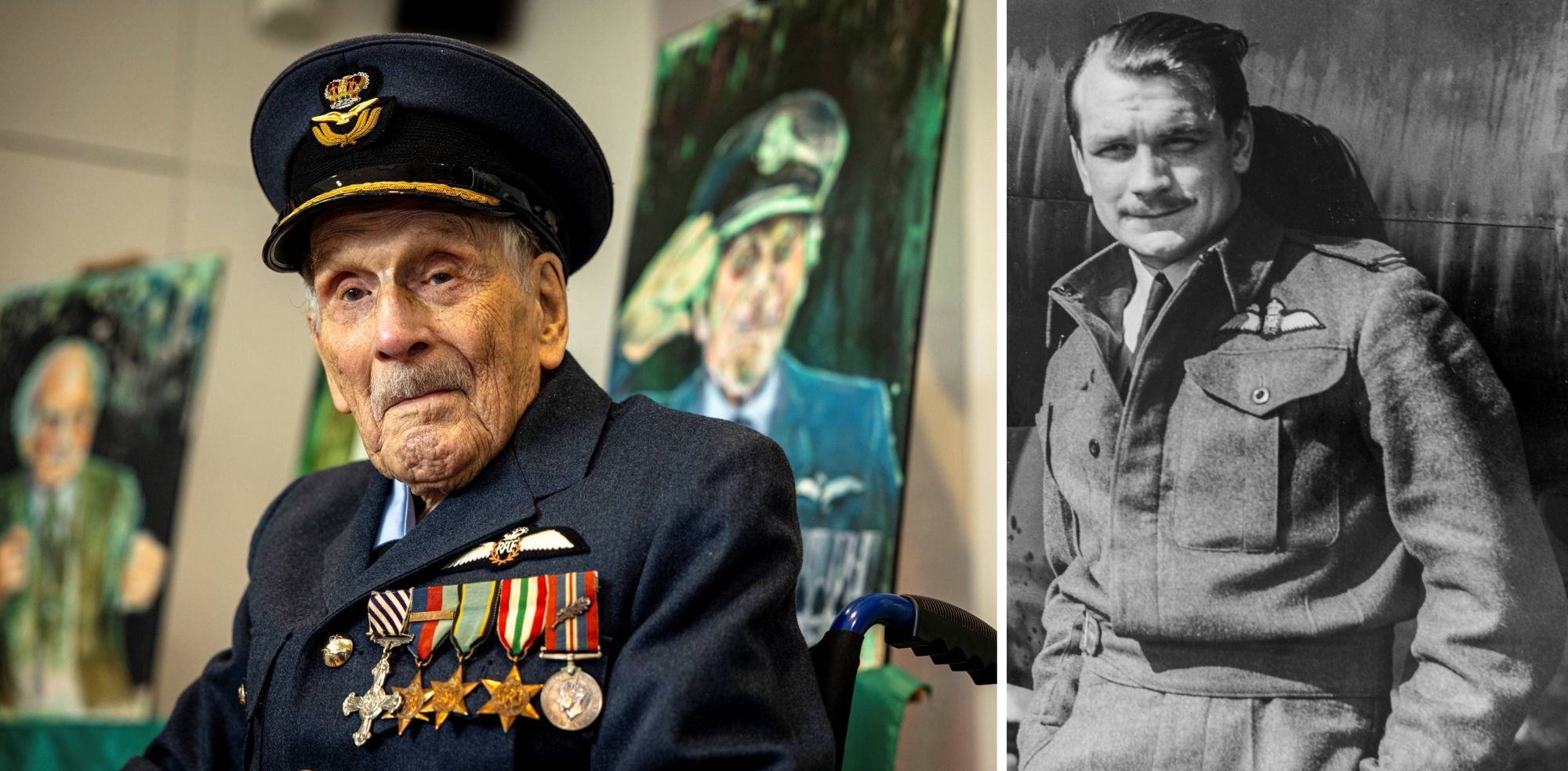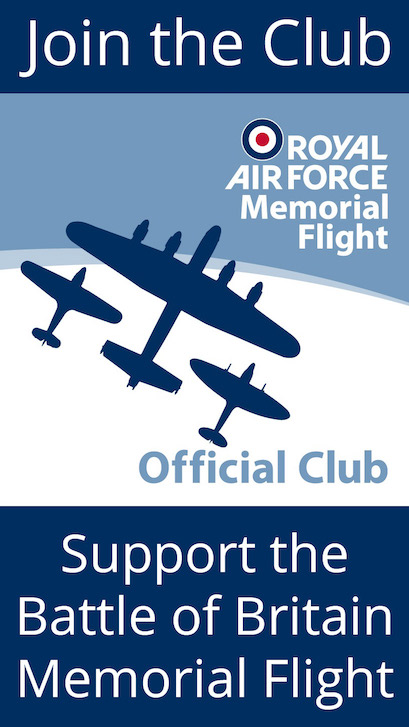Last Battle of Britain pilot, John ‘Paddy’ Hemingway, dies aged 105
Header image: Left: John Hemingway in his Group Captain’s uniform on his 105th birthday in July 2024 (Photo: Crown Copyright). Right: John Hemingway as a Flying Officer in 1940.
Many readers will have seen the sad news that the last surviving Battle of Britain pilot, Group Captain (retired) John ‘Paddy’ Hemingway DFC, passed away on 17th March at the age of 105. This is our tribute to the last of “The Few”.
John Hemingway was born in Dublin, Ireland, on 17th July 1919. He joined the RAF in March 1938 and by early 1940, following the outbreak of the Second World War, he was serving in France with 85 Squadron, flying Hurricanes. He claimed a Heinkel He 111 bomber destroyed on 10th May 1940 and, the following day, shared in shooting down a Dornier Do 17, before he was forced to crash-land near Maastricht after his Hurricane was damaged by German ‘flak’. He walked for three days to get to safety.

When the Battle of Britain began, Hemingway was back with 85 Squadron and flew on numerous scrambles and patrols, being involved in several air combats. His pilot’s logbook records up to five sorties daily that he, and the other pilots, undertook in defence of Britain. On 18th August, dubbed “The Hardest Day”, he was forced to bail out of his Hurricane over the Thames Estuary after it was damaged by return fire from a Junkers Ju 88 which he was engaging. He was rescued from the water by the crew of a lightship. On 26th August he was shot down by a Me Bf 109 over Eastchurch and forced to bail out again, landing unhurt. (The wreck of his Hurricane, P3966, which crashed on Pitsea Marshes, was excavated in 2019 and the engine, control column, data plate and some other parts were recovered. It is being rebuilt to flying condition by Hawker Restorations.) In a combat on 31st August Hemingway damaged a Bf 109, but had to force-land near Church Fenton due to bad weather and running out of fuel.
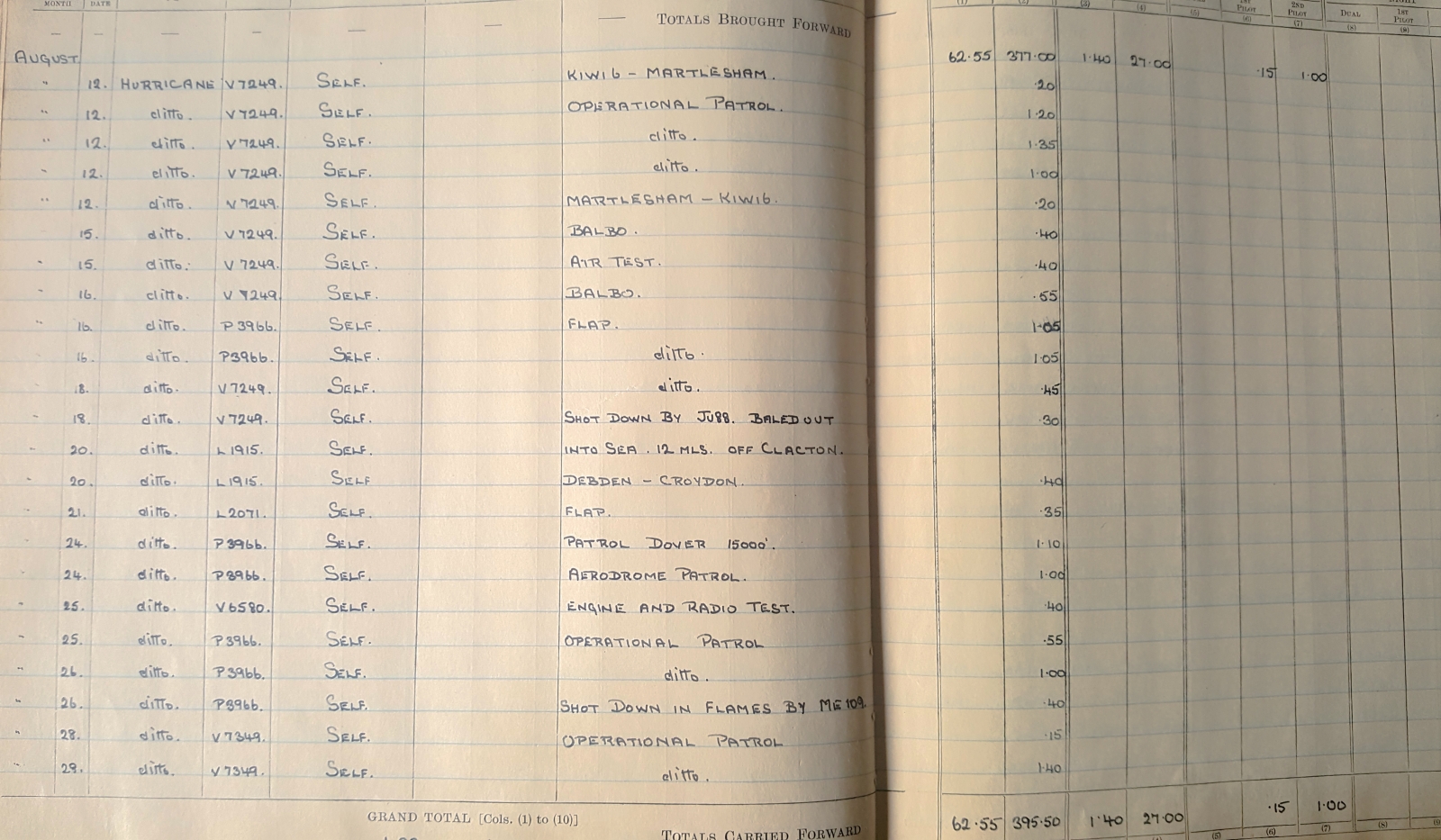
In February 1941, 85 Squadron, now a night-fighter unit, was re-equipped with twin-engine Douglas Havocs. During two consecutive nights in May, Hemingway engaged and damaged Heinkel He 111s. On 13th May he was forced to bail out of a Havoc after the instruments failed at night in bad weather. His parachute failed to open fully, but landing in a tree and soft ground broke his fall, although he damaged his ankles. He was awarded the DFC in July 1941.
After subsequently spending much of the war on the ground, his wish to return to operational flying duties was granted in early 1945, when he took command of 43 Squadron flying Spitfires in Italy, “helping the Germans with their retreat”, as he said. During a ground-attack strafing mission on 23rd April he was hit by ground fire and forced to bail out for the fourth time in his career, this time over enemy territory. He was helped by Italian partisans, who hid him and then smuggled him in disguise past the German lines to safety.
Having somehow survived all that the war threw at him, Hemingway remained in the RAF and eventually retired in 1969 as a group captain, before returning to his home in Ireland. Since 2019 he had been living in a care home near Dublin.
Some readers will remember that to help celebrate John Hemingway’s 103rd birthday in July 2022, the BBMF flew Lancaster PA474 and Hurricane PZ865 to Baldonnel (Casement) Airport, near Dublin. The BBMF pilots and crew were able to meet ‘Paddy’ and he was able to get up close to the Hurricane to bring back many memories.
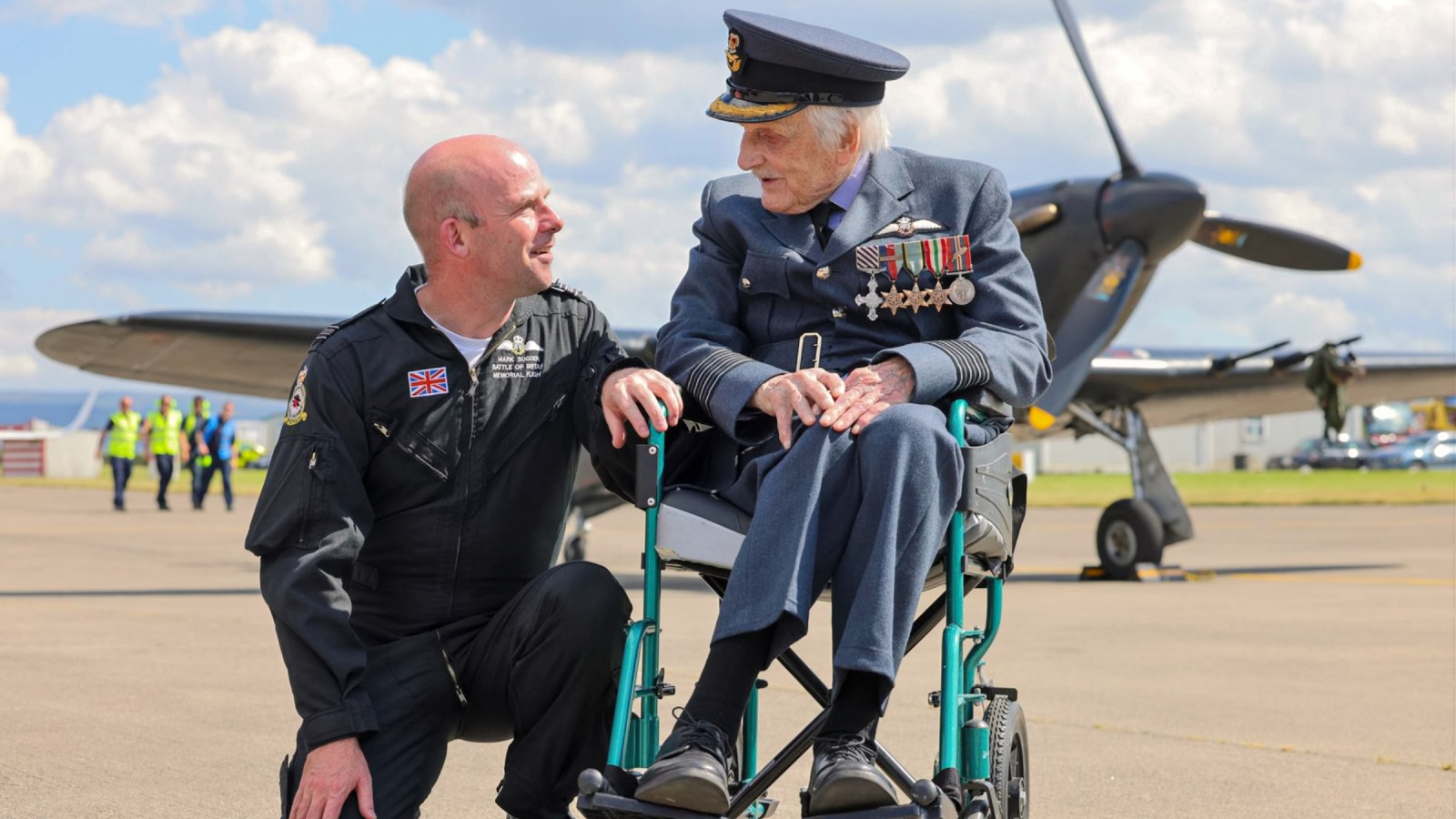
The BBMF has added Group Captain John Hemingway’s name to the port side of Hurricane LF363 as the Flight’s tribute to him. Whilst this is in no way authentic to the 303 Squadron markings currently worn by LF363 (Hemingway never served with 303 Squadron), it marks the passing of the “Last of The Few” on the Flight’s Battle of Britain themed Hurricane.
